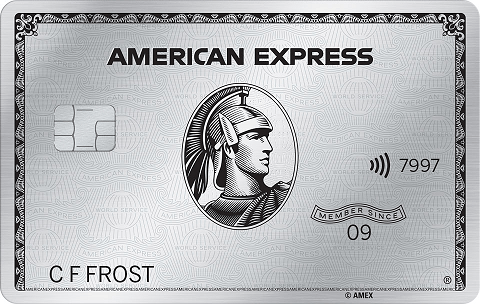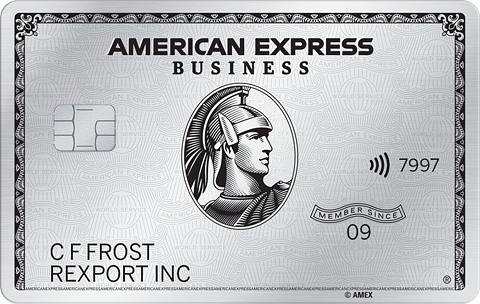5 Money Tips for Traveling with Pets

Many, or all, of the products featured on this page are from our advertising partners who compensate us when you take certain actions on our website or click to take an action on their website. However, this does not influence our evaluations. Our opinions are our own. Here is a list of our partners and here's how we make money.
As a two-time national champion, Lexie Costa is constantly traveling for competitions and events. Like most athletes, she eats a high-protein diet including baked cod, lamb and yogurt — even on the road.
Lexie Costa is a dog.
She's traveled for all sorts of competitions (including wing first place in the 2017 and 2018 American Kennel Club and North America Diving Dogs National Championships), and now works as a traveling stunt dog.
Lexie’s owner, Janice Costa, admits she’s spoiled — but that’s not the only reason she eats cod over kibble. Lexie has inflammatory bowel disease, and cod is one of the few foods she can eat.
But even if traveling with a pet like Lexie seems complicated, it doesn’t have to be. Here’s what you need to know about traveling with pets and how to save money while doing it:
1. Be choosy with locations
For some trips, you might not have a choice on the destination, as Lexie often experiences for her competition and show travel, or as you might experience if traveling to visit family or for work.
But if you can be flexible about where in the world you go, know what sorts of cities are especially accommodating to animals. Among the best cities to bring a pet are:
London, United Kingdom

(Photo from Nomad, London courtesy of @loki.demars)
For a trip to London, you might stay at Covent Garden, which has plenty of pet-friendly establishments. Restaurants that welcome dogs include Chestnut Bakery, Ave Mario, Cora Pearl.
Getting around London with a dog is easy, as dogs can travel for free on the London Underground and London Overground as long as they are kept on a leash or in a crate/carrier. As far as where you'll go? Victoria Embankment Gardens is ideal for strolling along the River Thames.
Among London's pet-friendly hotels include NoMad London. Though there's a pet fee of £50 (about $63) that includes goodies like dog treats crafted by the pastry team, NoMad-branded water bowls, beds and toys.
Vancouver, Canada
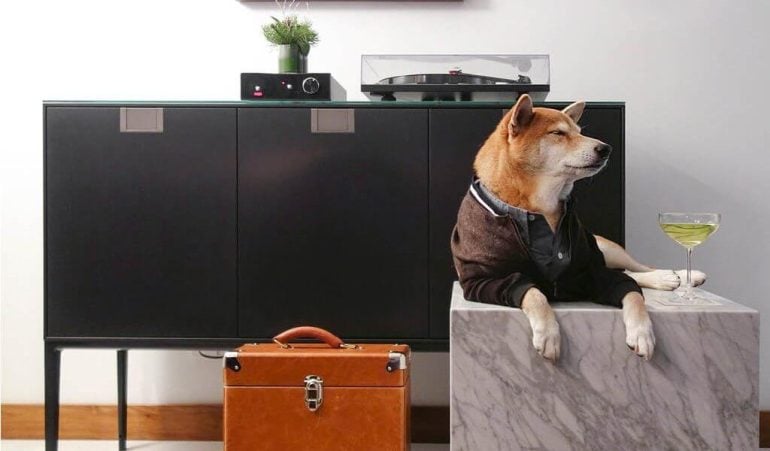
(Photo courtesy of Fairmont Pacific Rim)
Vancouver is ultra pet-friendly, thanks to attractions including Stanley Park. There, you'll find the Vancouver Seawall, which is the world’s longest uninterrupted waterfront path and ideal for dog walks. Then there's also Hadden Park Dog Beach, which is obviously dog-friendly, but also boasts spectacular mountain views.
Though the hotel itself has a relatively high base price, dog owners might opt to stay at the Fairmont Pacific Rim. That's because the luxury hotel allows guests to bring their pets for no additional cost — a rarity in the world of hotels.
St. Croix, U.S. Virgin Islands
Beyond being one of the best places to travel without a passport — or if you're a dog, a pawssport — St. Croix, U.S. Virgin Islands is also rather pet-friendly. In fact, in January there's even St. Croix’s annual Krewe de Croix Dog Parade. The event is a fundraiser for the St. Croix Animal Welfare Center and is held on the Christiansted boardwalk.
Even if you're not there in January, you might go explore the island for adventure activities. At Virgin Islands National Park, your pup can even join you on the Caribbean Sea with Virgin Island Expedition Company, offering dog-friendly kayaks and SUP rentals.
For lodging, you might consider the King Christian Hotel, which is conveniently located on the Christiansted waterfront. For a more intimate hotel, consider Waves Cane Bay. At both properties, there's no pet fee for dogs under 20 lbs.
2. Book hotel stays at brands that welcome pet owners
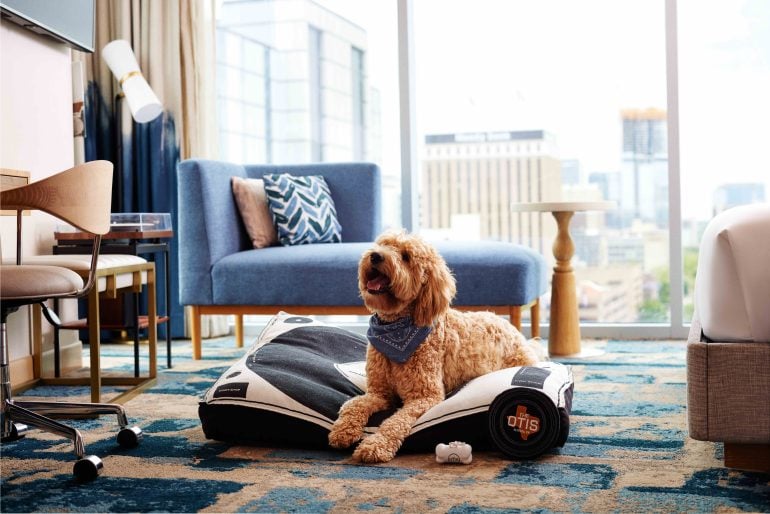
Pets are welcome (for an additional fee) at the The Otis Hotel Austin, Autograph Collection. (Photo courtesy of Marriott)
Staying in a hotel with a pet can be tricky, especially since pet policies are often inconsistent across different locations of the same hotel brand. And even if a hotel describes itself as pet-friendly, that doesn’t necessarily mean it’s friendly to all pets.
What’s more, pet-friendly is not necessarily synonymous with wallet-friendly. Pet-friendly simply means it allows some pets. But there could be restrictions around breed, weight, number of pets — and there might be a fee, too.
NerdWallet analyzed hotel policies as part of its annual Best Of's awards to find the best hotels that allow pets. Rankings were based on factors including cost and percent of hotels within that brand where pets are allowed.
The average pet fee across all hotels in NerdWallet's analysis is $81.60, representing, on average, a 33.50% fee as a percent of the overall room rate. Brands like Best Western, IHG and Wyndham had lower average pet fees, whereas Marriott and Hyatt typically charged more.

Understand the fine print
Before staying at a hotel with a pet, watch out for:
Extra fees: Nightly pet fees are often about $25, though some hotels charge flat fees regardless of the length of your stay — often around $100.
Not all pets are welcome: Some hotels let you bring certain pets. Dogs might be OK, but potbellied pigs may not be. Other hotels have weight restrictions, only allowing animals under a certain limit.
Pets might be allowed — but they can’t be left alone: If you’re going to a museum or restaurant or on a hike, you might want to leave your pet behind in the room. But some hotels don’t allow pets to remain unaccompanied. Don’t try to put out the "Do Not Disturb" door hanger and hope the housekeeper doesn’t notice the dog in your room. Understand the rules and be prepared to take your pet with you everywhere.
Look for hotels that don’t charge extra fees
Some major hotel brands are more pet-friendly than others. One pet per room (up to 80 pounds) can stay for free at Red Roof Inn and Red Roof PLUS+ locations, and one pet up to 40 pounds can stay for free at the brand’s higher-end Red Collection locations. At Motel 6, up to two pets weighing a combined 150 pounds can stay per room for free.
Kimpton Hotels, which are owned by IHG, are among the most pet-friendly. Not only are there no size restrictions (other than it must “fit through the door”), but there are no limits on the number of pets allowed either. The hotel concierge can also loan you pet beds and water bowls.
And some individual hotel locations within larger brands have taken unique step to be pet-friendly. For example, not only is Virginia Beach dog-friendly, but the Hyatt House Virginia Beach/Oceanfront has a deal with a company called Sitters by the Sea to offer World of Hyatt members discounted pet sitting and dog walking.
But if they do charge fees, know what's included. Sometimes the extra amenities can justify the extra cost. For example, the Le Merigot Santa Monica, a Marriott property in Southern California, offers pets and their owners a welcome amenity and plush pet bed. There's also an on-site dog park, and you can ask hotel staff for dog treats, too.

The Le Merigot Santa Monica. (Photo courtesy of Marriott).
3. Fly pet-friendly airlines
Alongside its hotel rankings, NerdWallet also analyzed the most pet-friendly airlines for its annual Best Of awards. NerdWallet's rankings considered criteria like types of animals allowed and rate of pet deaths or injuries and pet fees.
NerdWallet rated Alaska Airlines as the best airline for traveling with a pet, as it had among the lowest fees and the most flexible pet policy in terms of what types of pets you can bring.
Another airline to consider (which wasn't factored in NerdWallet's rankings given its limited size) is semi-private jet service JSX. JSX charges a $100 fee for small pets that fit in a cabin carrier. Though its airfares are typically more expensive than traditional airlines, it might even out if your other choices charge even higher pet fees.
The difference between emotional support animals and service animals matters
Air travel with a pet got significantly harder this year for pets who typically flew under the guise of emotional support animals. The Department of Transportation announced at the end of December that it no longer considers emotional support animals to be service animals, which are otherwise required by law to be allowed to fly with passengers on commercial airlines.
As of January 2021, most major airlines including Delta and Alaska Airlines no longer accept emotional support animals as service animals (though they may travel under the traditional pet policy).
When you do board an airplane with your pet, make sure it’s wearing a collar with your contact information. Additionally, paste your contact info in their travel crate in case any pets, crates or humans get separated.
Be prepared to pay
Even if you find a commercial airline that’ll allow your pet to fly, there’s generally an extra cost. Delta charges $95 each way for pets traveling in the cabin with you on U.S. flights — plus they count toward your carry-on baggage allowance. JetBlue pet fees are $125 each way, and the airline only allows cats and dogs that weigh 20 pounds or less. Alaska charges $100 each way.
» Learn more: What it costs to fly with your pet in the plane cabin
4. Consider alternative lodging and transportation
Costa has three dogs, which makes travel even more complicated. Since many hotels that call themselves pet-friendly limit the number of pets to two, even traditional lodging is sometimes not feasible.
“A $75 pet fee is not really dog-friendly in my opinion,” Costa said.

Photo courtesy of Best Friends Roadhouse and Mercantile
Search for true dog-friendly lodging where pets are encouraged
Hotels like the Best Friends Roadhouse and Mercantile in Kanab, Utah, specifically encourage visitors to bring their pets. Rooms are designed for pets, with amenities like complimentary self-serve washing facilities and a fenced-in park. It’s located in the heart of many Utah and Arizona national parks, and the hotel provides pet-walking services and in-room visits. You can enjoy your vacation while your pet lives it up in the hotel room.
For travelers looking for a vacation centered entirely around their dogs, Costa — who was frustrated by the lack of pet-friendly vacation options — runs an annual camp called Canine Camp Getaway. It’s held at hotels chosen by Costa specifically because they don’t have the aforementioned pet restrictions. Camp-style activities are designed for vacationers — both human and canine — including hiking, water sports and “barks and crafts.”
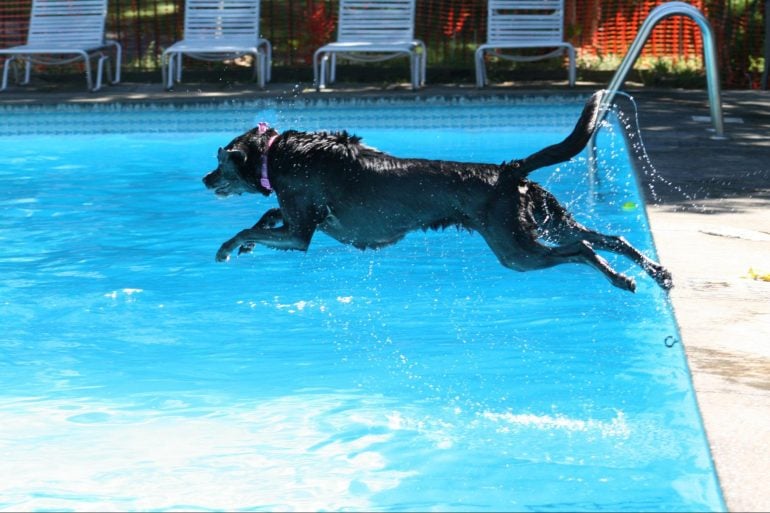
Photo courtesy of Janice Costa
Consider a vacation rental
When Costa travels and there isn’t a true, pet-friendly hotel available, she prefers vacation rentals. For a dog like Lexie that needs fresh fish, the kitchen is essential. But even lower-maintenance dogs tend to do better in vacation rentals given the likelihood of amenities that most hotels don’t have, like yards. Short-term rental sites like Airbnb have pet-friendly filters to make searching easier.

Photo courtesy of Harvest Hosts
Rent an RV and take a road trip
If you’re on a road trip, it might make sense to rent an RV so your pet has more space to roam around (though you should secure the pet while your vehicle is in motion).
If you go all out and buy your own RV, consider adding custom, pet-friendly additions. Joel Holland, CEO of RV campsite finder Harvest Hosts, said he’s seen pet crates hidden under seats, and even litter boxes disguised as shelves.
5. For international travel, contact the USDA
When planning an international trip, bringing your pet can be a complex, multistep process that requires advance planning and preparation.
Your first step should be to visit the USDA’s Animal and Plant Health Inspection Service (APHIS) website, which has a few simple steps to follow.
Most international pet travel will require that you supply a health certificate that is issued by a USDA accredited veterinarian. Separately, this file will need to be endorsed by your local APHIS office via mail or in person.
Various governmental agencies regulate the entry of your pet back into the U.S. — plan ahead and check those requirements ahead of travel.
6. Book with the right credit card
Though no travel credit card includes specific benefits for flying with Fluffy, several offer airline incidental credits that can be put towards any fees charged for pet travel.
$695.
$695.
$550
$95.
Up to $200 annually with your preferred airline. Enrollment required.
Up to $200 annually with your preferred airline. Enrollment required.
Up to $250 annually with your preferred airline. Enrollment required.
Up to $100 annually.
Terms apply.
How to travel with pets, recapped
Pet boarding can be expensive. Begging your neighbor to pet sit for you can be more trouble than it’s worth. In many cases, traveling with your pets makes more sense.
And Costa believes it’s probably better for your pet to come along with you anyway.
“Dogs are happier and they live longer when they have stimulation outside the home,” Costa says. “Traveling with your pet — if you can find a way to do it — is actually helpful to improve their longevity.”
How to maximize your rewards
You want a travel credit card that prioritizes what’s important to you. Here are our picks for the best travel credit cards of 2023, including those best for:
Flexibility, point transfers and a large bonus: Chase Sapphire Preferred® Card
No annual fee: Bank of America® Travel Rewards credit card
Flat-rate travel rewards: Capital One Venture Rewards Credit Card
Bonus travel rewards and high-end perks: Chase Sapphire Reserve®
Luxury perks: The Platinum Card® from American Express
Business travelers: Ink Business Preferred® Credit Card
on Chase's website
1x-5x
Points60,000
Pointson Chase's website
1.5%-5%
CashbackUp to $300
2x-5x
Miles75,000
Miles


